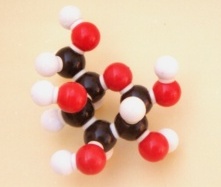
galactose
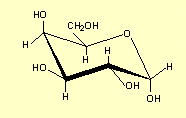


glucose
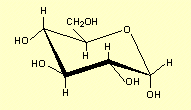

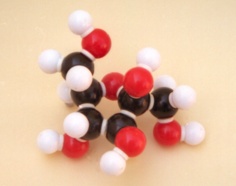
fructose
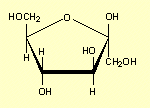

Photos of molecular models for Option 3 Forensic Chemistry
For other models
click on
amino acids and peptides
(a) carbohydrates
In the models black is carbon, white is hydrogen, red is oxygen.
(i) Three simple monosaccharides
 |
galactose
|
 |
 |
glucose
|
 |
 |
fructose
|
 |
The relationship between the 'bent' ring and planar ring structure of glucose was shown in Figure 13.4 on page 450 of CCHSC. In more detail:
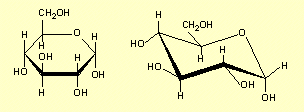
Remember there is a carbon atom at each apex of the structure.
(ii) Sucrose, the commonest disaccharide
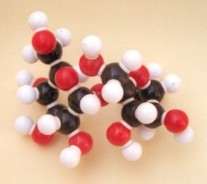 |
sucrose
|
 |
|
Glucose and fructose . |
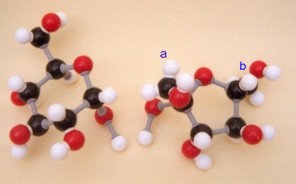 |
At a the ring C is only just visible below the CH2OH. At b there is a CH2OH below the ring C; the C of this is hardly visible. These correspond to a and b in the structure.
(iii) The difference between cellulose and starch
For cellulose b-glucose is used and the second (right hand) glucose is rotated 180o (about a 'horizontal' axis). Look at the CH2OH group and the O atom in the ring.
 |
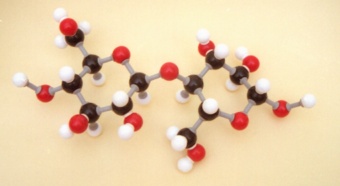 |
 |
 |
For starch a-glucose is used and there is no need to rotate the second (right hand) glucose molecule.
 |
 |
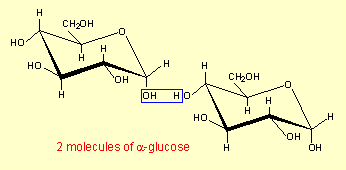 |
 |
When you make these molecules you will see that the alternate inversions in cellulose keep the molecule nearly linear while joining similarly oriented glucose units makes the molecule curl around.
For other models
click on
amino acids and peptides